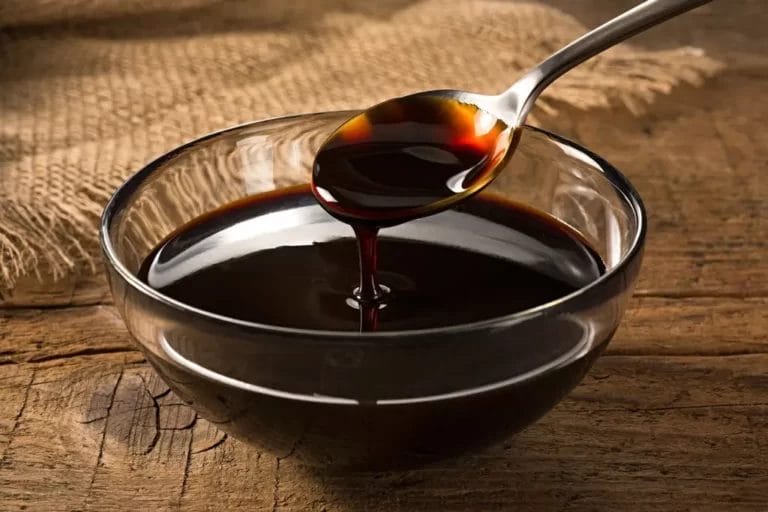Cascara is a rising star that grabbed massive attention in the last couple of years. You might be seeing it keep popping up at different coffee shops’ menus and recipes. So, what is this mysterious ingredient? Well, it’s a part of coffee. No, not the bean that we love. It’s the coffee cherry peel in which our precious beans are held. By that, we can produce cascara syrup.
Can you believe the once thrown away garbage is now a valuable drink?

The waste coffee skin is now more costly than the beans. Now, hold onto your seats, as Coffeenom takes you on the journey of cascara syrup from cherry skin to your cup.
What Is Cascara, And Where Does It Come From?
To understand Cascara, you need to know where coffee comes from. Coffee grows on a coffee plant as coffee cherries. We all know and love the green coffee bean is the seeds inside the coffee fruit. The outer skin of the cherries is called “cáscara.” It is a Spanish word that translates to “shell.”

Usually, the coffee farmers save the coffee beans to make coffee. Coffee producers discard coffee cherry skins as a byproduct of coffee production or use them as fertilizer for farming. Some used it as fuel for mills.
But today, we know how heavenly delicious the leftovers are. Cleaning and drying the skin makes it ready to be marketed. Cascara is found in coffee-growing countries like Ethiopia, Yemen, and Bolivia.
A common misconception about Cascara is that it’s often confused with cascara sagrada. Simply put: it’s dried tree bark shavings, which can also be steeped for tea, just like Cascara. As a result, Cascara sagrada is a common ingredient in dietary supplements.
Learn more from our piece on what are coffee cherries.
Recipe For Cascara Simple Syrup
You can prepare the simple cascara syrup at home. All you need is Cascara, and a sweetener may be cane sugar, brown sugar, or honey.

Add 1 cup of sugar and ½ cup of Cascara to 1 cup of water. Boil everything together in hot water to a syrup and let it cool a bit. Strain off the shells. And Voila! You have the simple syrup. It will have a runny honey-like consistency. If you’re too lazy to make your delicious cascara syrup, it’s available online for you to buy as well.
Uses of Cascara Syrup
Cascara syrup is used as a natural seasoning for coffee drinks or the base for cocktails. Whether hot or cold drinks, coffee cherry tea, or cascara iced tea, cascara syrup can be a fine addition. Also, you can enjoy the syrup drizzled over a scoop of vanilla ice cream. It also complements a doughnut, waffle, or pancake as toppings, which all coffee drinkers love as an additional dessert.
Recipes to try with Cascara
Non-Alcoholic Moscow Mule
- Cascara Syrup
- Ginger Beer
- Club Soda
- Lime
- Mint Leaves
Cold Brew Coffee Spritzer
- Cascara iced coffee
- Coconut milk
- Sparkling water
- Heavy cream
- Ice
Cascara & Juniper Mocktail
- 10 Juniper Berries
- 3oz Cascara Tea
- ¼ tsp Ginger Juice
- ⅛ oz Lemon Juice
- ½ oz Simple Syrup
Cascara Soda
- 60ml Cascara Syrup
- 100-120ml Soda
- Ice Cube
Cascara Tisane (Hot)
- 18g Cascara
- 10.5oz of 200F water
- Put them together in a Sachet/Tea Strainer.
Cascara Tisane(Cold)
- 3.5oz cascara
- 1ltr cold water
- Steep for an extended time(24hrs max), strain, pour over ice to enjoy.
Cascara Syrup Taste Profile
Cascara has a low caffeine level, unlike a regular cup of coffee. So, of course, the taste of Cascara is not as strong as coffee. Instead, it has a sweet and fruity flavor with notes of resins and is filled with a burst of antioxidants.
The deep, earthy flavor comes from the drying process. The procedure gets lengthy because drying the skins without spoiling them is complex.
Its flavor potential has no limit. That varies with the soil and climate of the location of the coffee harvest. The most common flavor is hibiscus. You can feel other flavors, including papaya, plum, date, rosehip notes, peach, tamarind, and green apple. Cascara is reminiscent of cinnamon, orange, and cider.
Calories In Cascara Syrup
Calories in your classic syrup of Cascara are pretty low too. Each 100ml of cascara syrup contains only seven calories, way less than granulated sugar or cane sugar.
Cascara syrup can be safely used as a sweetening alternative in drinks.
Cascara of Starbucks
Starbucks coffee brought Cascara into the spotlight. They first launched Cascara Latte in 2017. Since then, it has been a subject of hype among other coffee companies. Cascara Latte is similar to a regular latte because espresso is mixed with steamed milk. The drink has a velvety foam topping with cascara latte syrup as an addition.

Starbucks Cascara Coffee Latte may taste like a delicious regular latte, but it has a non-sweet kick. The drizzle of cascara syrup has a cherry, brown sugar, and fruity flavor. It starts to get sweeter and becomes pleasingly bitter when the taste resolves.
The Cascara Latte was a considerable success for Starbucks coffee, which unlocked new flavor potentials for Starbucks to cater to their audience. They continue to add new cascara syrup drinks to their menu, Including
- Iced cascara coconut milk latte
- cold brew with cascara cold foam
- Cascara cold brew
Having fun Nomies? You’ll love to read our piece on what is cold brew coffee.
Cascara Tea
Cascara tea or fruity-tasting coffee cherry tea is neither authentic tea nor coffee. Teas come from Camellia sinensis plant species, whereas coffee is the roasted bean inside a coffee cherry. Yet, coffee lovers address it as tea. Most people perceive it as herbal tea.

Cascara tea is perfect for brewing both a hot and cold beverage. For making 1 cup (8 ounces) of tea, use 2-3 tablespoons of Cascara. The steeping time ranges between 5 and 7 minutes. Although Cascara has natural sweetness, some people like it with extra added sugar or honey. The tea is compatible with any additional flavor, such as cinnamon, nutmeg, or ginger.
Had fun reading? Learn more from our piece on what is cascara.
Bottom Line
Now that you know all about cascara syrup, it’s an excellent time to go and impress people with your newfound knowledge. Would you like cascara syrup to complement your coffee?
If you are looking for a hipster approach to your morning cup of joy, this is the way to go. It will eventually become your favorite sweet brew. I hope you enjoy this new variation and keep drinking coffee. Because dinosaurs didn’t, and you know what happened to them.
FAQs
The taste profile of cascara syrup ranges from a resin-like sweet and fruity.
They are both the same. But it’s neither tea nor coffee.
Cascara syrup is used as a natural seasoning for coffee drinks or the base of a cocktail.
No. cascara syrup is made from the skin of coffee cherry.
A 100 ml of brewed Cascara contains 16 mg of caffeine.

